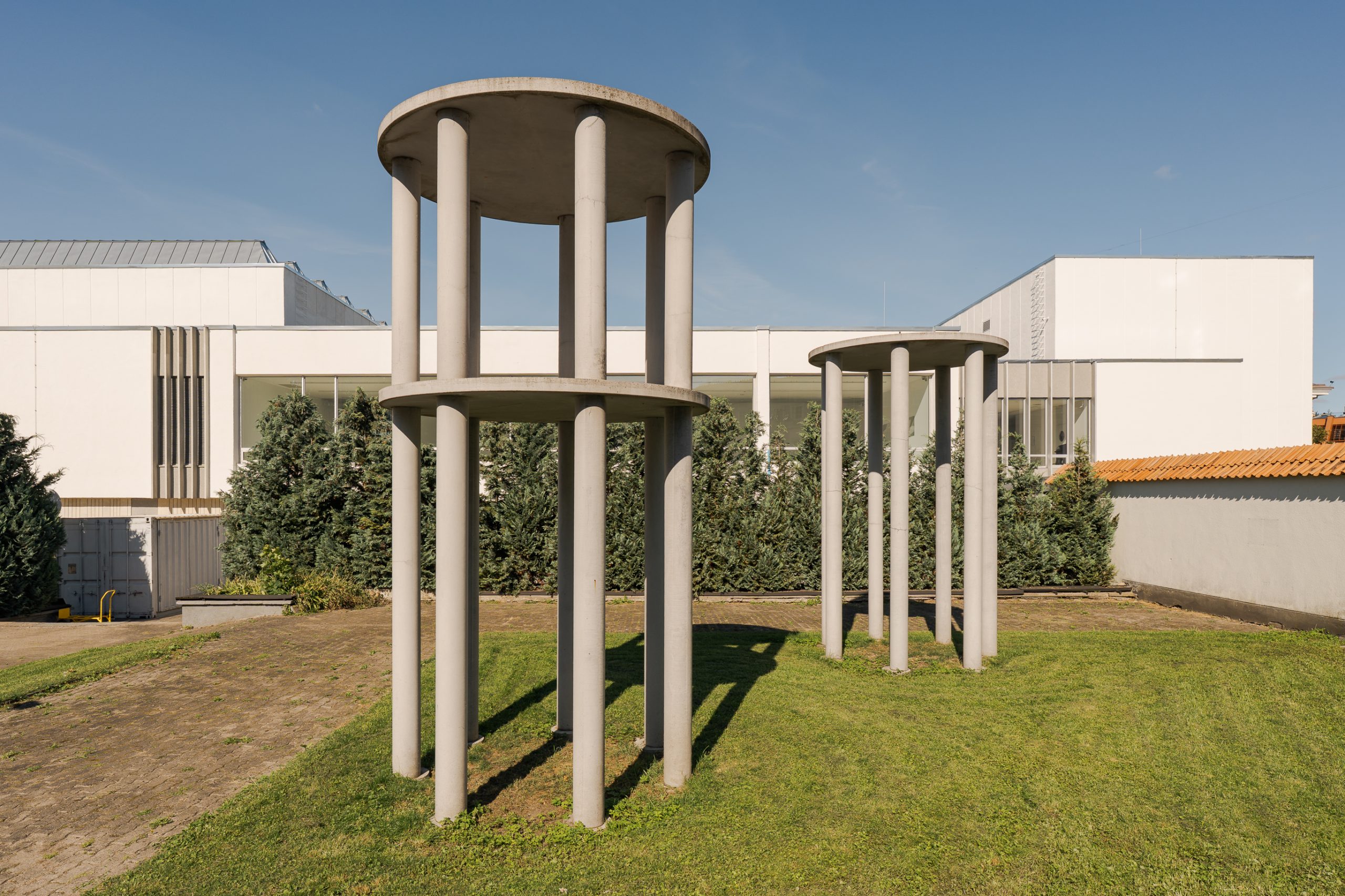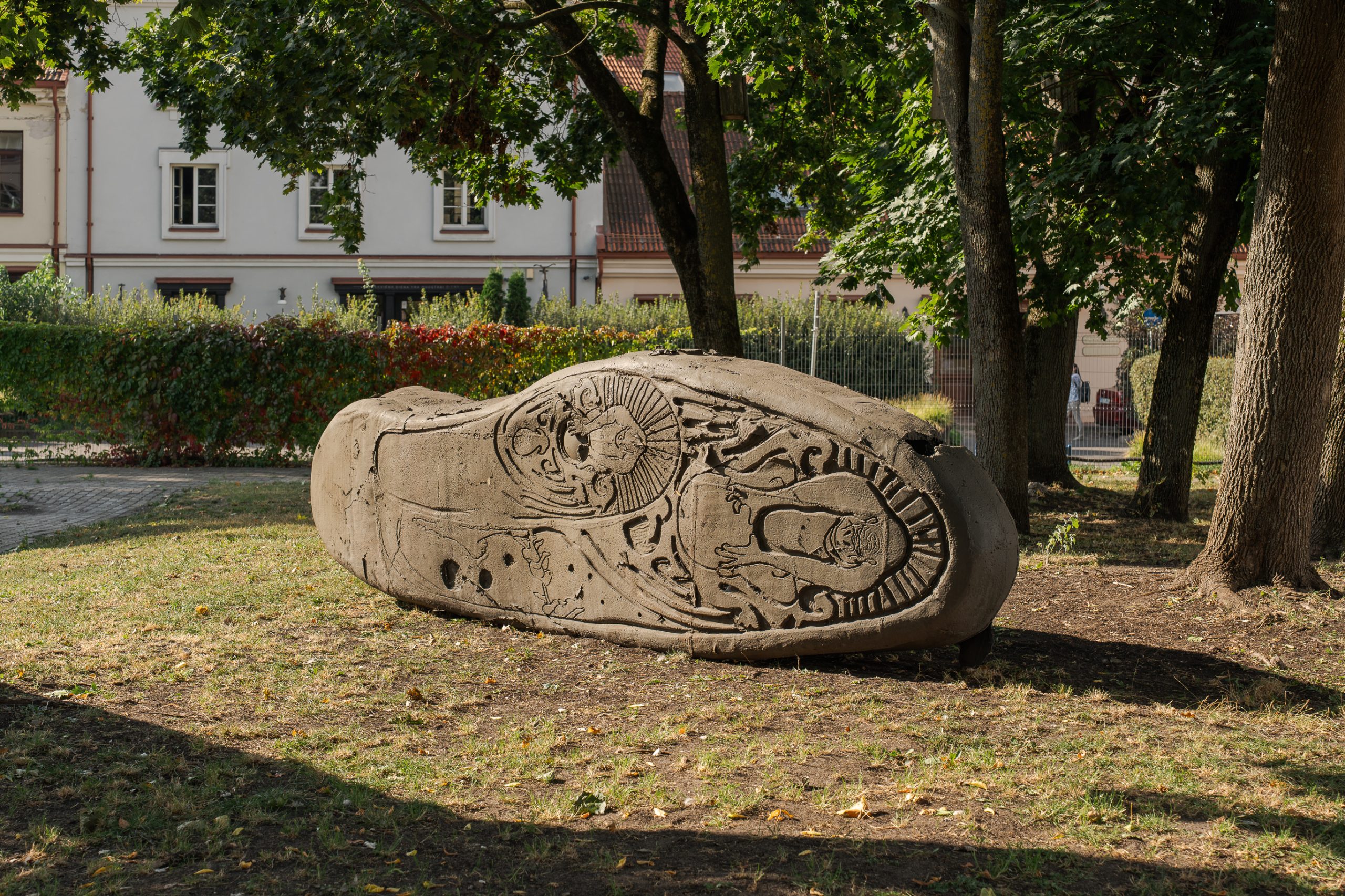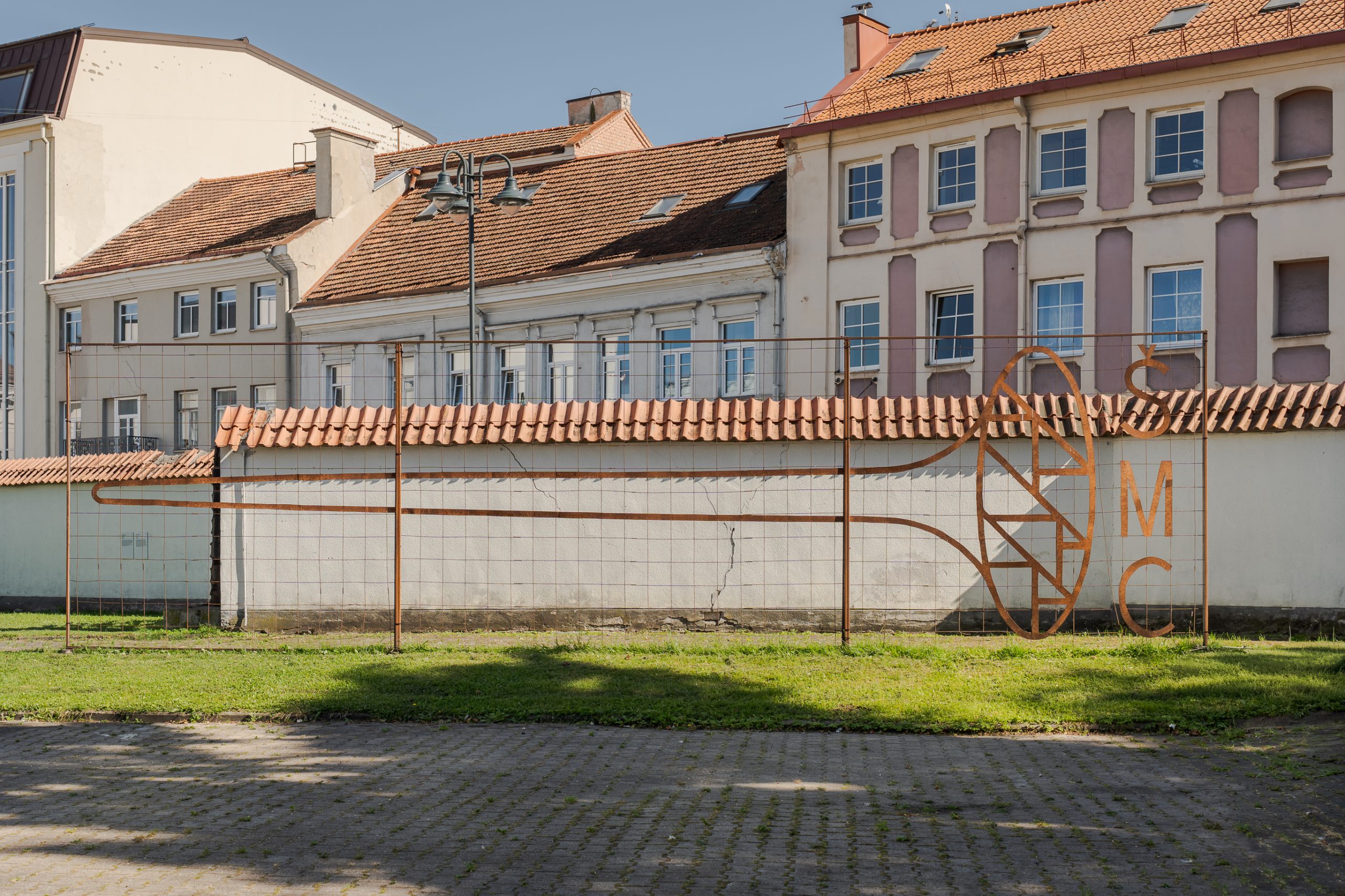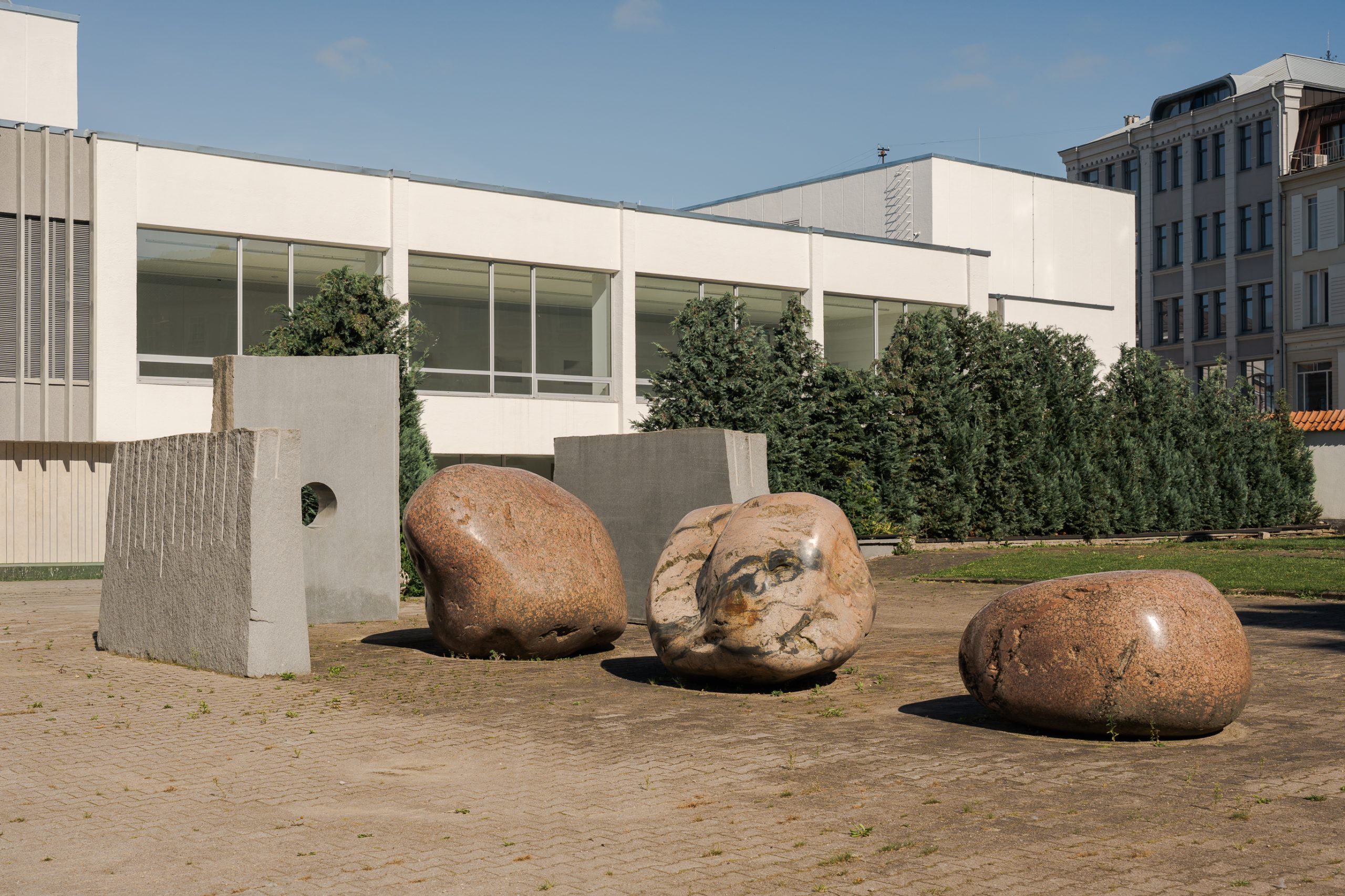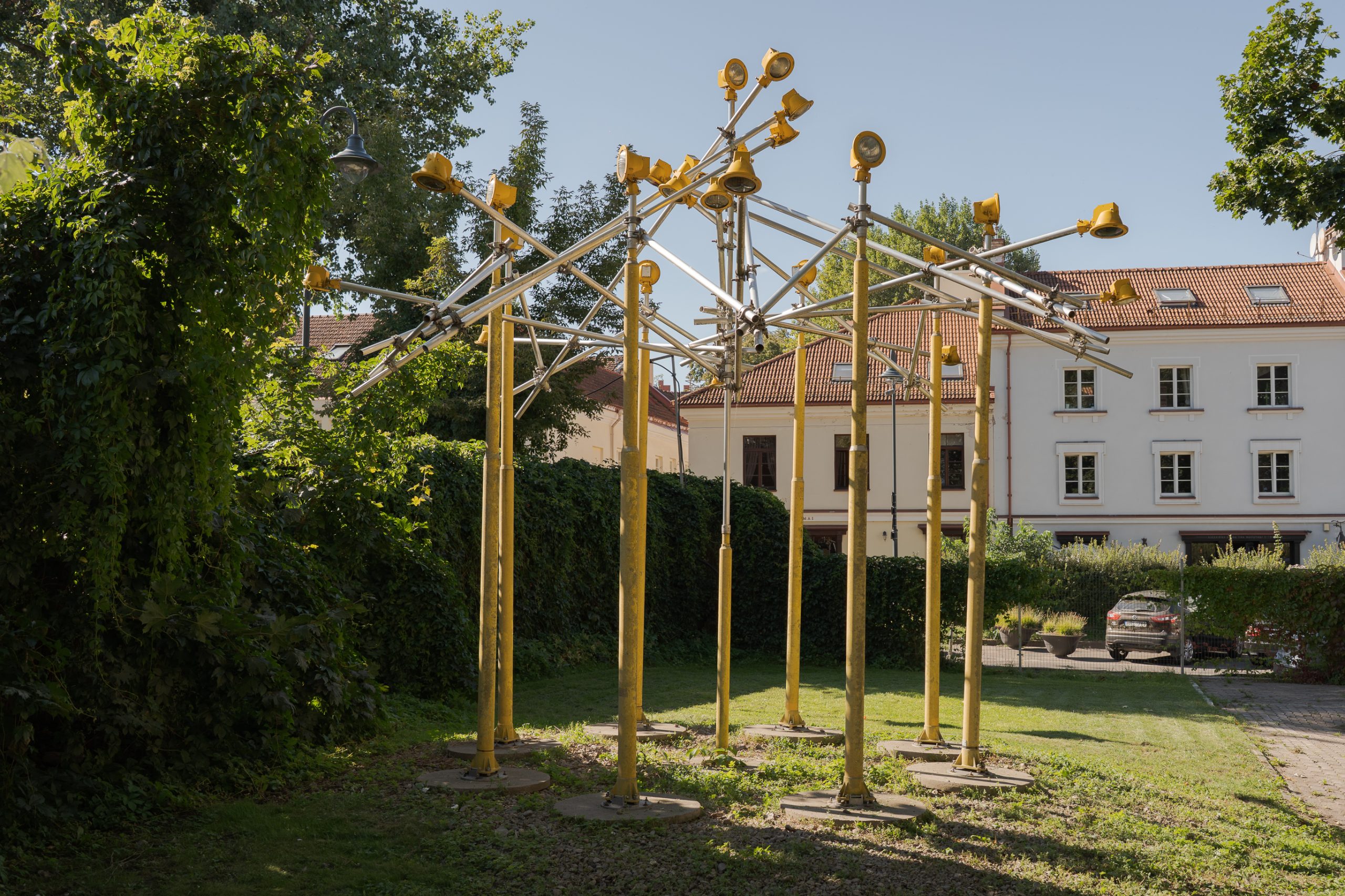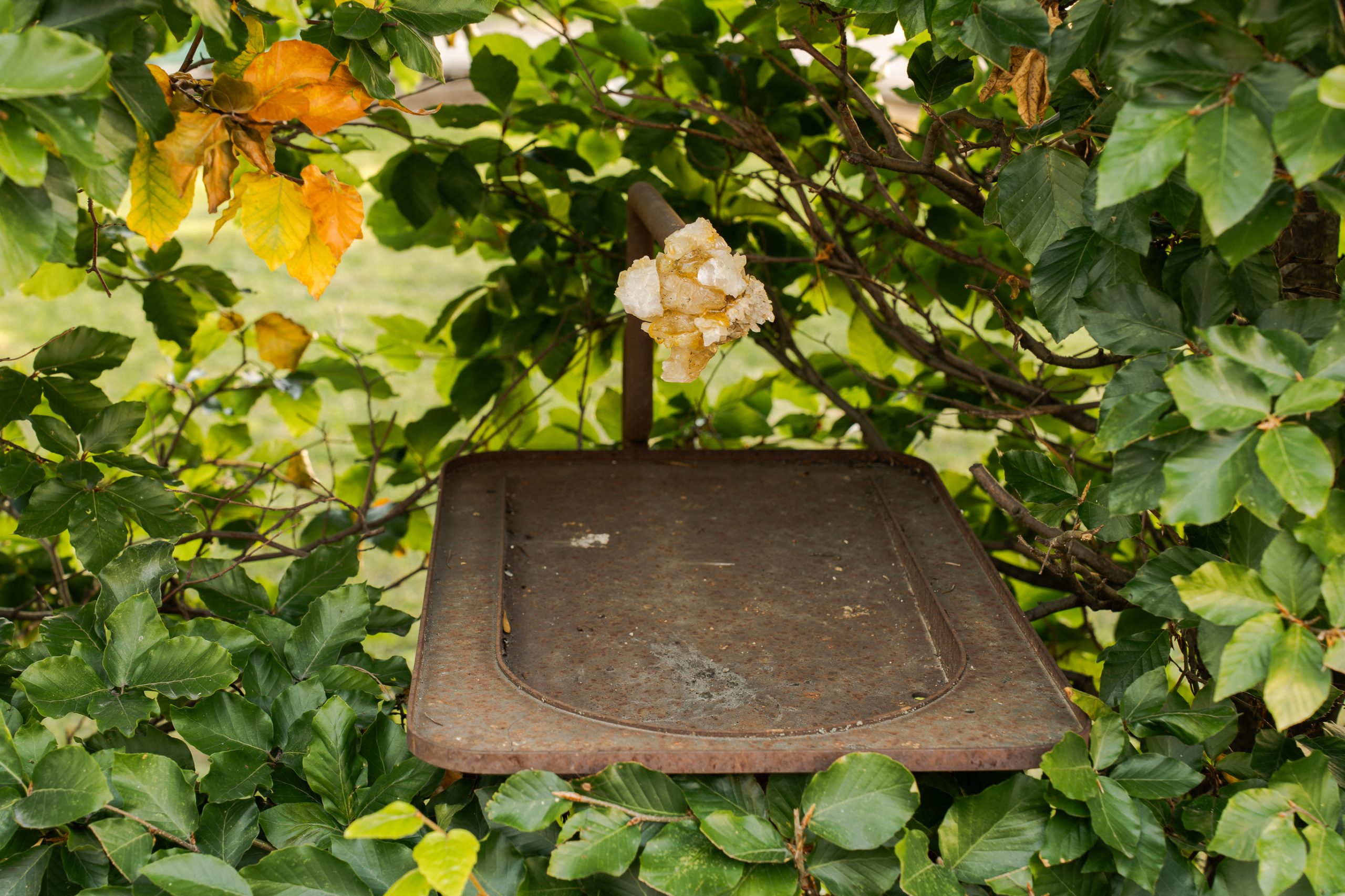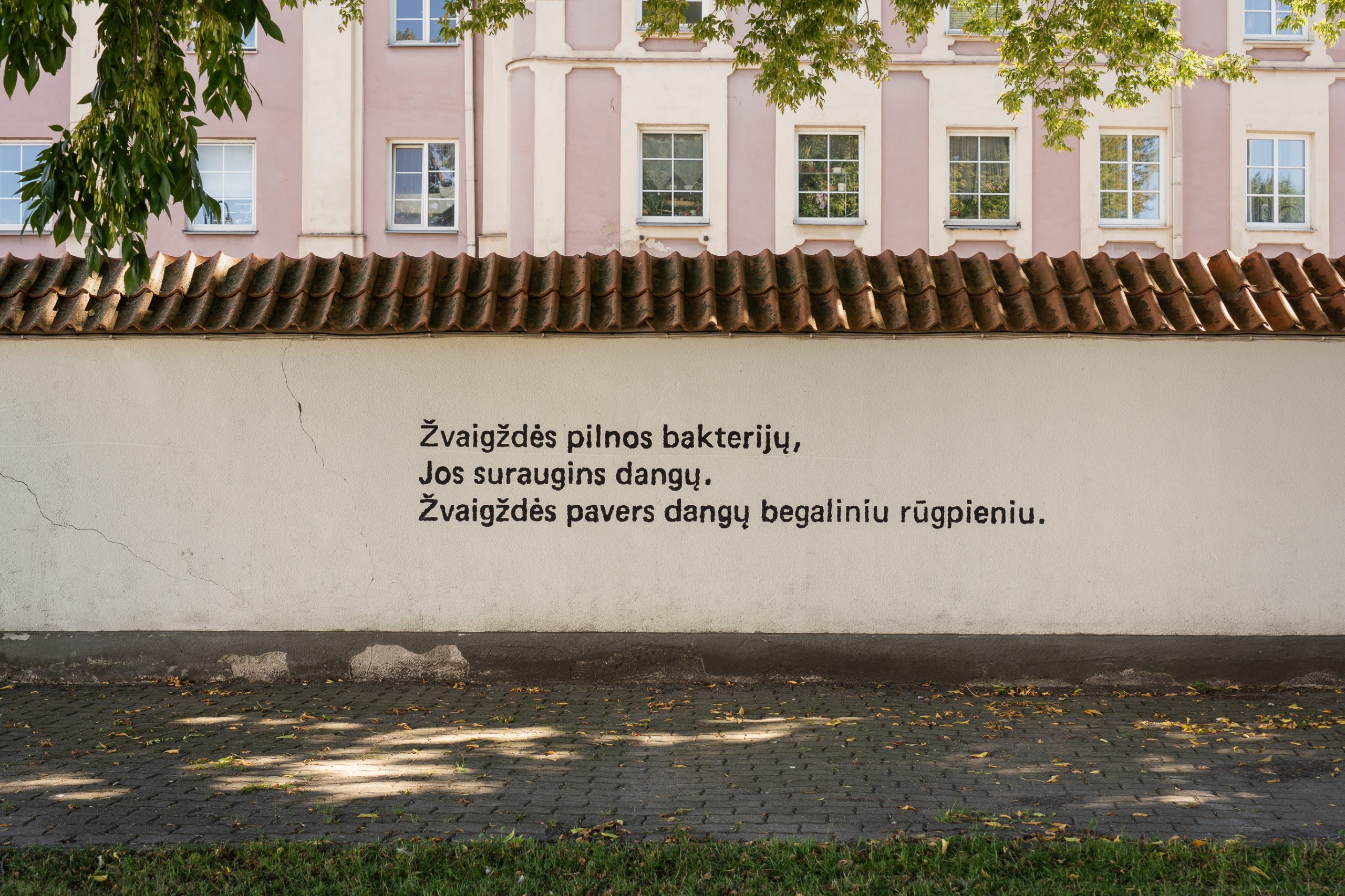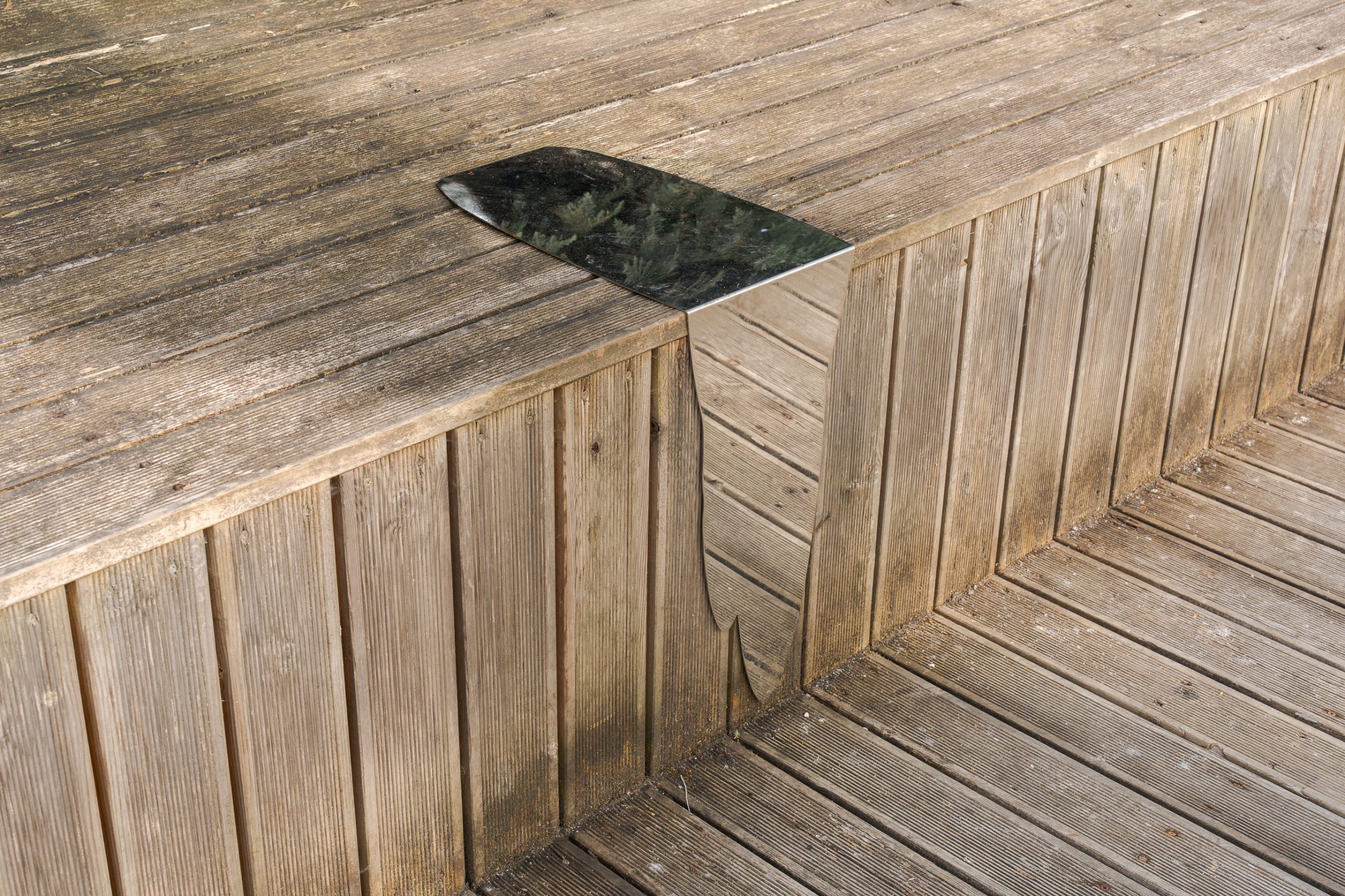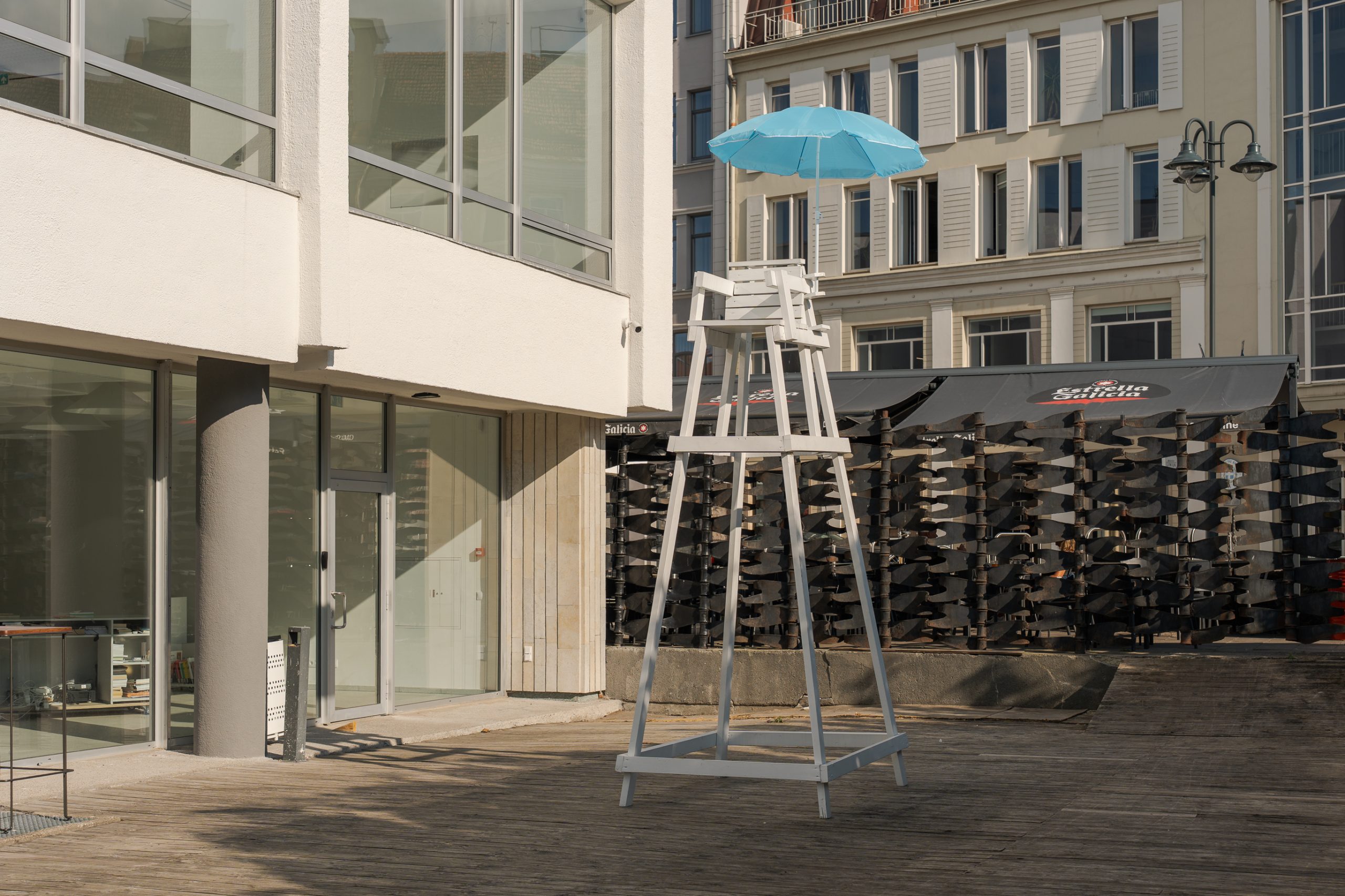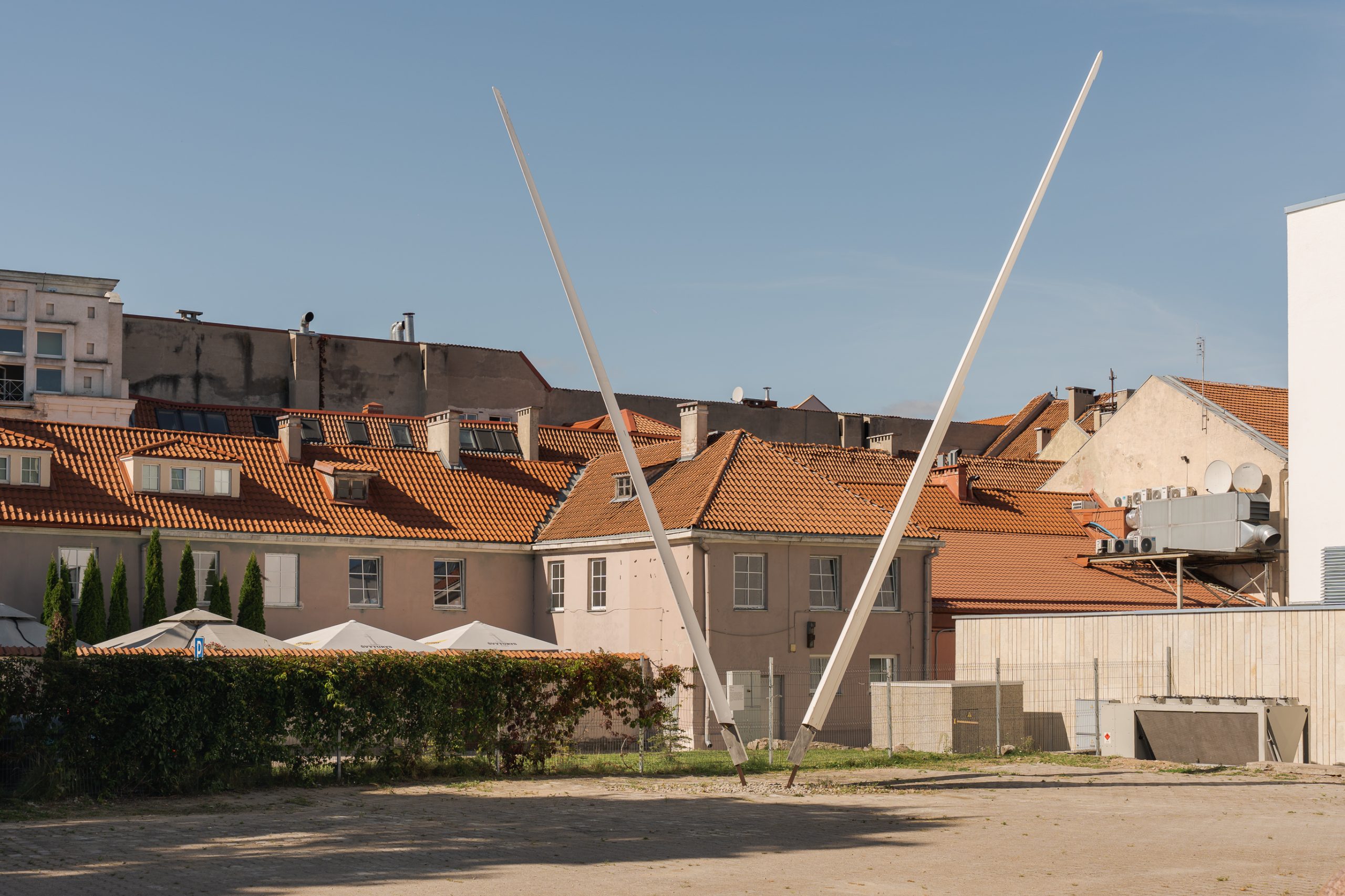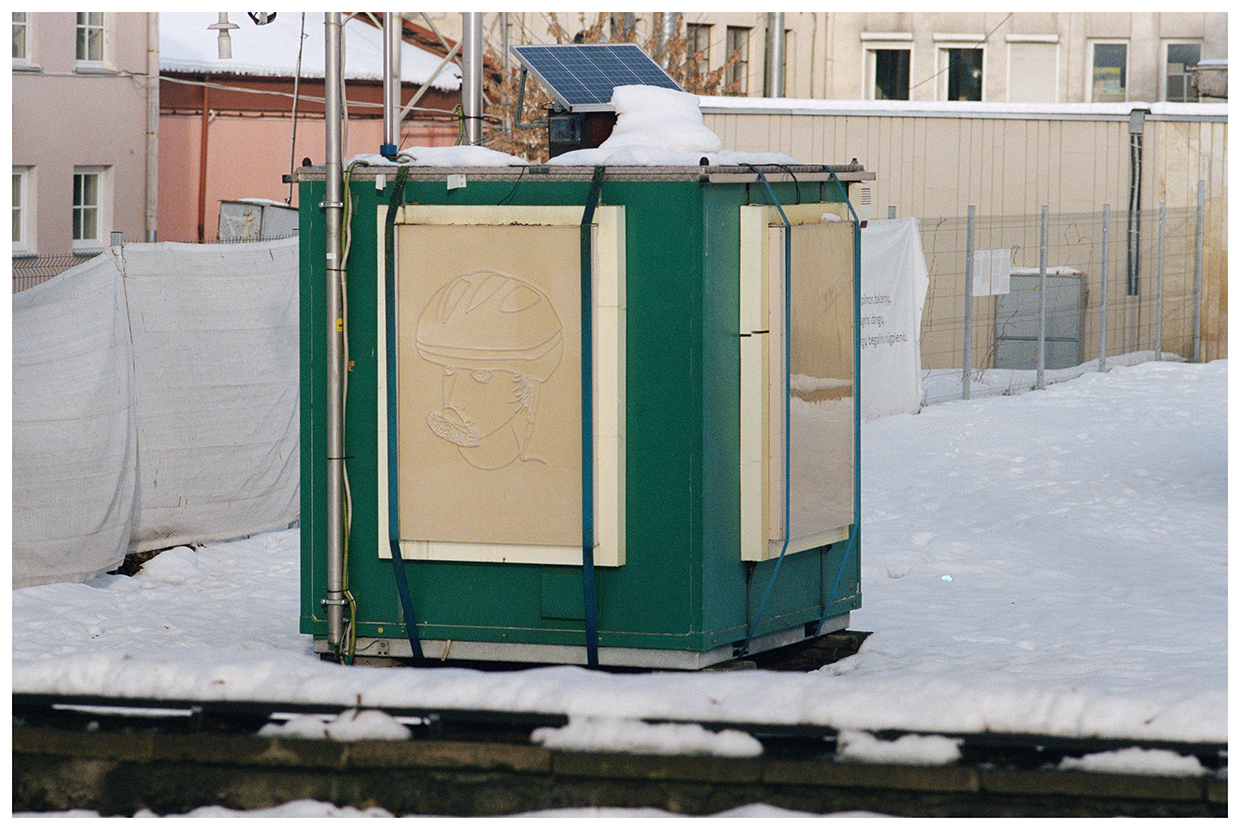The CAC Sculpture Yard was established in 2017 to mark the 25th anniversary of the Contemporary Art Centre (CAC). Its creation revived the original vision of the architect Vytautas Edmundas Čekanauskas, whose design for the building included an open yard dedicated to exhibiting sculptures outdoors. By realising this aspect of the original plan, the project restores the architectural integrity and conceptual coherence of the CAC ensemble, now recognised as a valuable cultural heritage site.
Today, this evolving exhibition space in the Old Town of Vilnius is open to visitors free of charge and offers an accessible way to encounter artworks by both Lithuanian and international artists. Many of the featured artists have longstanding connections to the CAC, and several of the sculptures on display have been previously shown in exhibitions organised by the CAC.
The works currently on view in the CAC Sculpture Yard include sculptures by artists Audrius Bučas, Antanas Gerlikas, Vaiva Grainytė, Donatas Jankauskas-Duonis, Žilvinas Landzbergas, Maria Loboda, Beatričė Mockevičiūtė, Robertas Narkus, Mindaugas Navakas and Augustas Serapinas.
Curated by Kęstutis Kuizinas
